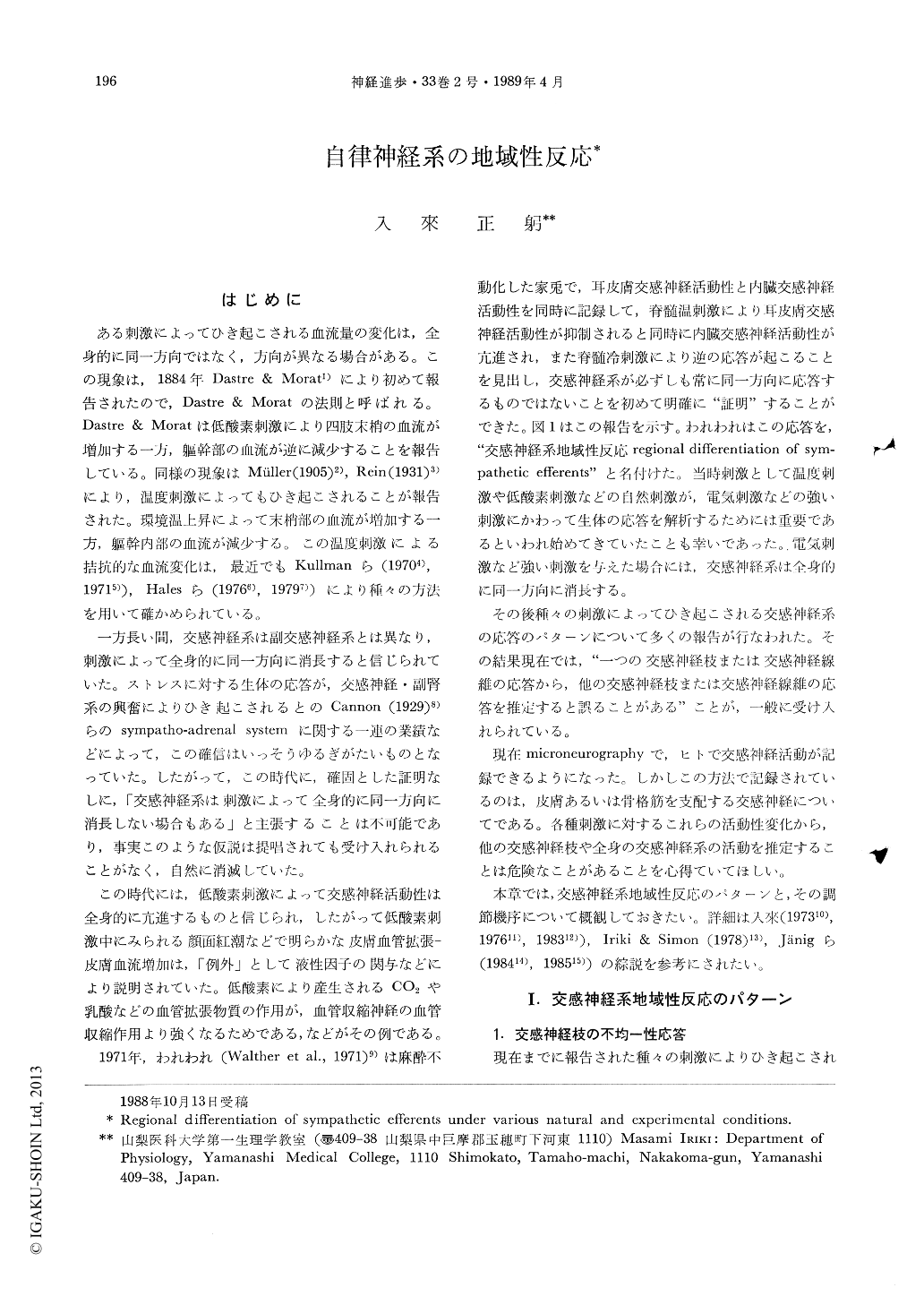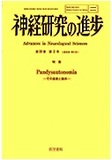Japanese
English
- 有料閲覧
- Abstract 文献概要
- 1ページ目 Look Inside
はじめに
ある刺激によってひき起こされる血流量の変化は,全身的に同一方向ではなく,方向が異なる場合がある。この現象は,1884年Dastre & Morat1)により初めて報告されたので,Dastre & Moratの法則と呼ばれる。Dastre & Moratは低酸素刺激により四肢末梢の血流が増加する一方,躯幹部の血流が逆に減少することを報告している。同様の現象はMUIIer(1905)2),Rein(1931)3)により,温度刺激によってもひき起こされることが報告された。環境温上昇によって末梢部の血流が増加する一方,躯幹内部の血流が減少する。この温度刺激による拮抗的な血流変化は,最近でもKullmanら(19704),19715)),Halesら(19766),19797))により種々の方法を用いて確かめられている。
一方長い間,交感神経系は副交感神経系とは異なり,刺激によって全身的に同一方向に消長すると信じられていた。ストレスに対する生体の応答が,交感神経・副腎系の興奮によりひき起こされるとのCannon(19298)らのsympathoadrenal systemに関する一連の業績などによって,この確信はいっそうゆるぎがたいものとなっていた。
The autonomic nervous system is involved in maintaining homeostasis of the internal body status, and one of its most important functions is control of a major homeostatic effector system. With respect to this control function, the roles of the two main components of the autonomic nervous system -the parasympathetic and sympathetic-have generally been considered to differ. For a long time the ability to induce regionally well-defined changes have been ascribed mainly to the parasympathetic system, while the sympathetic system was assumed to mediate "en masse" reactions.

Copyright © 1989, Igaku-Shoin Ltd. All rights reserved.


